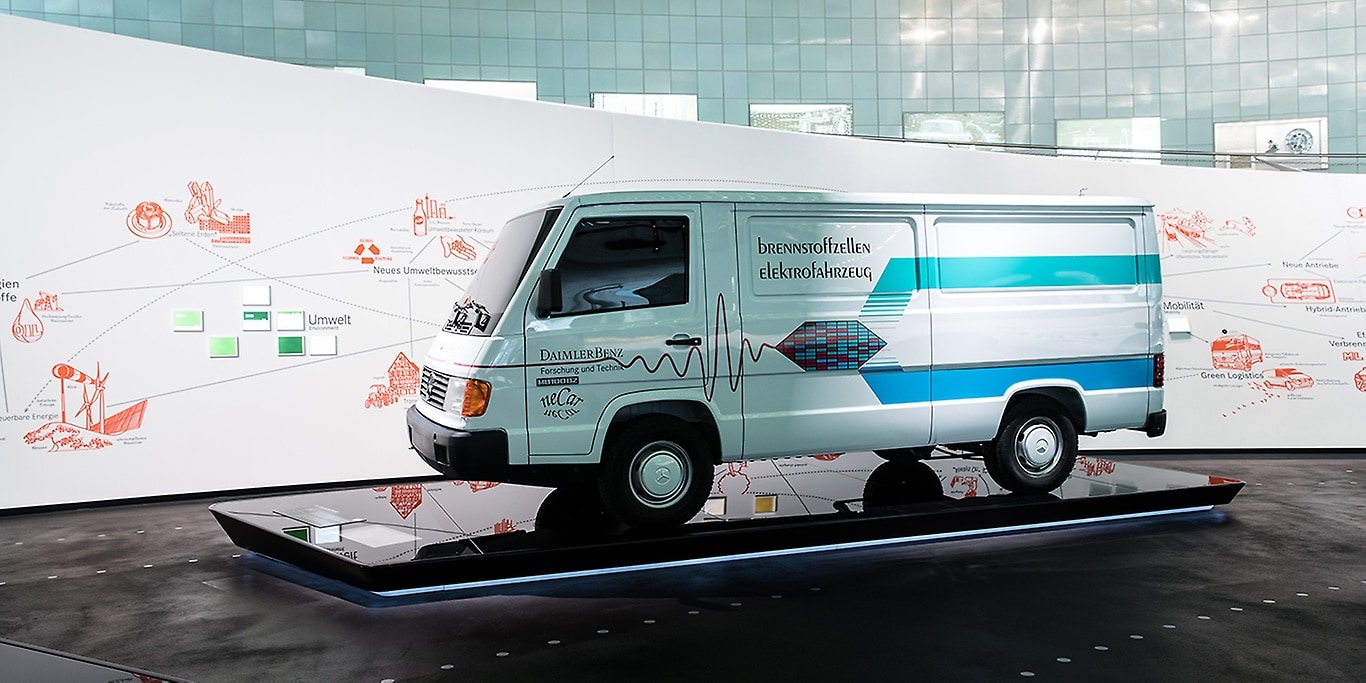The current high point of this trend is the Mercedes-Benz GLC F-CELL (combined hydrogen consumption: 0.34 kg/100 km; CO₂ emissions, combined: 0 g/km; combined power consumption: 13.7 kWh/100 km1).
This moment of the world premiere filled me with pride: At last, the vehicle we had developed was standing in the spotlight. In 1994, the NECAR was an absolute sensation. It had a PEM fuel cell as its power supply, and it could be driven for many kilometers under everyday conditions without any problems whatsoever. The designation NECAR stands for “New Electric Car.” Later on it was renamed the NECAR 1, because it was followed by the NECAR 2 as early as 1996 and by other fuel cell vehicles after that. When I say “we” I’m referring to our small and creative team of pioneers, and I’m writing this report mainly from our team’s perspective.
But now let’s go back a bit further to the year 1988 and the predecessor company of Daimler AG: Daimler-Benz. At that time, it was an integrated technology group — it not only manufactured automobiles but also operated in the aerospace sector and the digital and computer electronics industry. I regard that period as a very important phase. The company had an extremely wide range of know-how covering outstanding technological products in many different areas. I was working at Dornier, where we were developing fuel cell systems for manned space flight.






